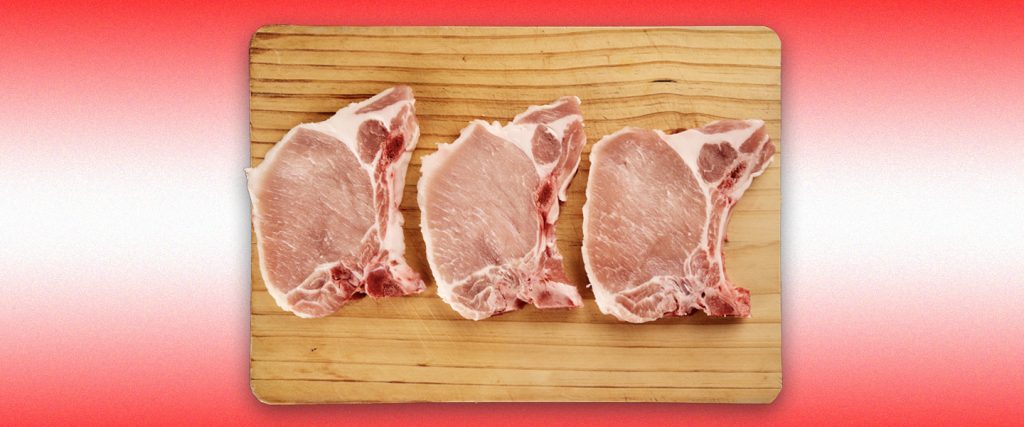Thanks to the ubiquitous “the other white meat” marketing campaign of my youth, I totally grew up thinking pork was indeed an honest-to-goodness pale cut of protein. Period. End of discussion. I even had the nerve to get internally haughty about the whole thing. “Idiots!” I chuckled within my own brain. “Why would anyone ever think pork wasn’t a white meat?”
Well, the joke was on me. It turns out, there’s a whole lot more to whether a meat is classified as white or red than appearance. Nor does it have anything to do with a straw poll taken at the conference room table of America’s pork producers.
So which is it — white meat or red meat?
It’s most a matter of who you ask, and what field they happen to be in.
Scientifically speaking, it essentially comes down to how much myoglobin is present. Myoglobin is a protein located in the muscle cells of most animals, and it contains a pigmentation that’s responsible for creating the red shading of those meats. Because pork categorically contains more myoglobin than animals on the low end of the myoglobin spectrum — including fowl like chicken and turkey, and also typically including most types of fish — pork automatically registers as red meat.
Also, for the sake of factoring in its associations, pork is in the livestock category, which includes cows and lambs, both of which supply meat that’s undeniably red by classification.
Who thinks pork is white meat then?
From a culinary standpoint, pork is often classified as white meat because it’s pale in color before and after it’s been cooked. However, some of this is the result of contextualization — and frankly, the eyeball test — because different cuts of a pig are categorized differently at market, with different colorings maintained throughout their culinary life cycle. For instance, ham and bacon are both noticeably darker than, say, pork chops or pork loin.
Cuts of meat that are classified as “pork” are often far leaner than other parts of the pig (namely, the aforementioned ham and bacon). To that end, here’s how a 100-gram piece of lean pork compares with other portions of the pig, along with some completely different meats.

The thing that really stands out here is the fat content and commensurate calorie increase of the bacon, which is selected on the basis of its fatty content. Aside from that, most of the other meat sources are within hailing distance of one another on a gram-for-gram basis, with the pork products being just slightly lower. The disparity in myoglobin is reflected in the iron levels, while the whiter meats usually have greater amounts of cholesterol.
So speaking very generally — and primarily on the nutritional side of things — it doesn’t seem to matter a great deal whether your meat is white or red unless your doctor has asked you to pay microscopically close attention to your iron and cholesterol intake.
It seems like you’re saying that pork is really “the other red meat.”
That’s exactly what I’m saying. Honestly, I was gullible for ever thinking otherwise. Pork is “the other white meat” to the same degree that beef is “what’s for dinner,” which in our household was almost never.
Who knew you couldn’t trust TV commercials?

